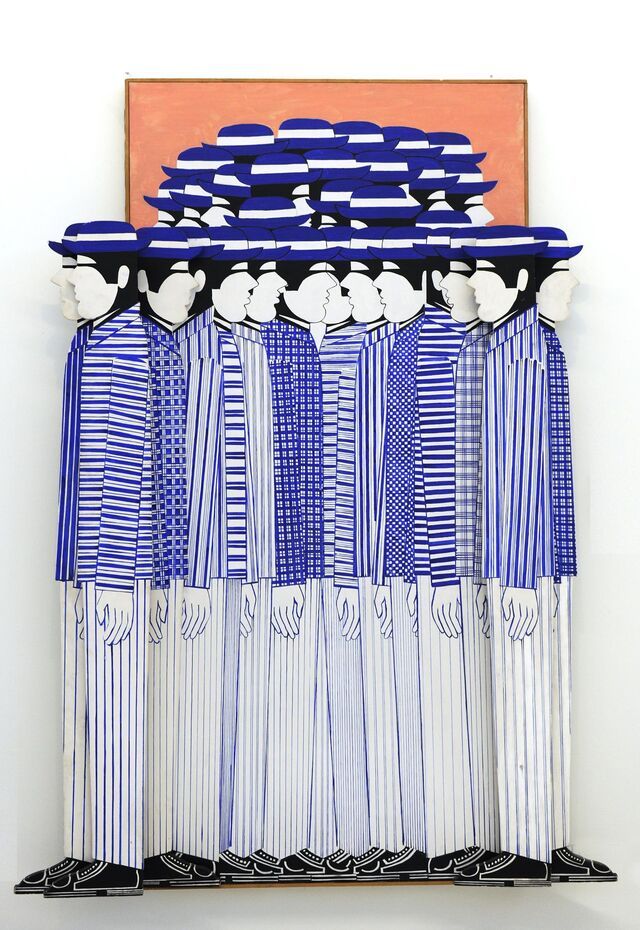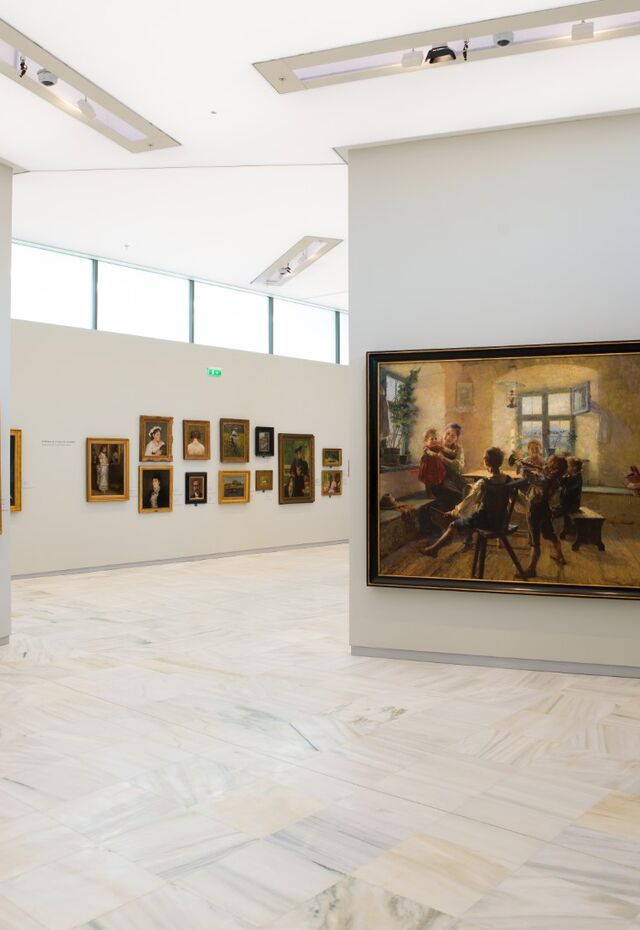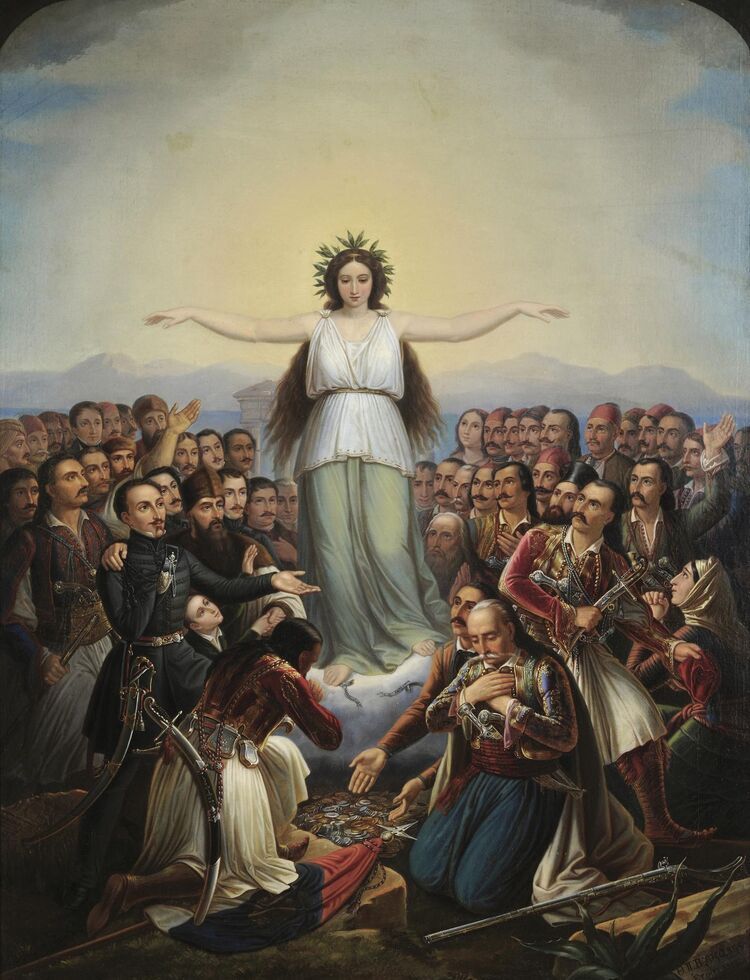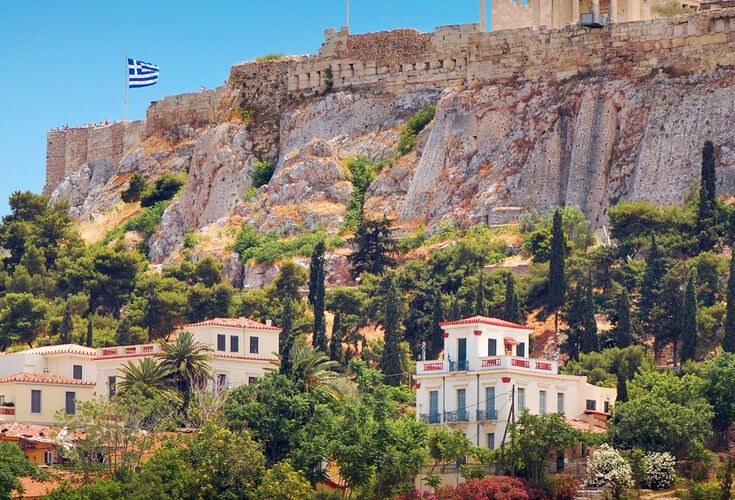A tour of the National Gallery of Athens


OVERVIEW
A tour of the National Gallery of Athens
The National Gallery is the museum Athens was waiting for. It was established in 1900 but its current incarnation – in an ultra-modern, fully refurbished building reopened in 2021 – finally does justice to the extraordinary wealth of its exhibits.
You’ll find the occasional gem by a European master (such as Rembrandt and Picasso) but the real reason for visiting is to witness the evolution of modern Greece through the works of its most prominent artists.
From the colourful post-Byzantine years to key moments and personalities of the 1821 revolution against the Ottomans and the establishment of the modern Greek state, Greece’s history is depicted in portraits, still lifes and landscapes & seascapes with historical and mythological motifs, as well as personal themes of the artists.
More than 1,000 works are spread across 21,000m2 amidst decor that is minimalist and chic, with the lighting (much of it natural) often giving the impression that the paintings are almost luminous.
You’ll be introduced to works by the best-known modern Greek painters – amongst them Dominikos Theotokopoulos (better known as El Greco), Nicos Engonopoulos, Yiannis Moralis, Iakovos Rizos, Kostas Tsoklis Giorgos, Gounaropoulos, Giorgos Iakovidis, Evripidis Koutlidis and Alekos Fassianos, as well as those in the Don’t Miss highlights below – although you certainly don’t need to be an aficionado to appreciate their beauty or significance.
DON'T MISS
Street Market (1979-1982) by Panayiotis Tetsis
The exhibition starts in the museum lobby with a 15m long triptych bursting with the colours, noises, and aromas of a downtown Athens marketplace, painted in the artist’s characteristic post-Impressionistic style. It’s a scene that says that Athens’ National Gallery is open to everyone.
Portrait of Mrs. Serpieri (1869) by Nikephoros Lytras
Known as ‘the father of modern Greek painting’, Lytras was a favourite of King Otto and Queen Amalia and his portrait of the royal couple is his defining work. However, it was this larger-the-life portrait of the wife of a Greek industrialist that got him noticed by Athens’ newly formed Bourgeoisie – even more so given the super-opulent gold frame made in France.
On the Terrace (1897) by Iakovos Rizos
Paris-educated Rizos evokes the spirit of the Belle Epoque in this romanticised vision of late-19th-century Athenian aristocrats lounging on a balcony of a neoclassic house in Plaka, with the Acropolis resplendent in the background.
The Betrothal of the Children (1877) by Nikolaos Gyzis
The custom of Greek families engaging young children to be married during Ottoman times (possibly to protect them from the interests of Turks) is represented in this oil painting. The boy looks quizzically at his ring whilst the priest addresses the girl and the families look on in satisfaction.
Christ (ca 1900) by Konstantinos Parthenis
The theme of this monumental circular oil painting – depicting a mournful Christ wearing a thorny crown – is enhanced by the emotion portrayed in the colours (a spectrum of blues merging with yellow in place of a halo) and eyes gazing up at heaven.
Composition (1975) by Yannis Gaitis
You move on to 1970s pop art next with Yannis Gaitis’ characteristic stylised figures, gathered crowd-like to depict mass consumer society and dressed in the colours of the Greek flag.
Wall Painting (1932) by Fotis Kontoglou
This giant wall painting was never intended for public display, having originally lined the wall of the artist’s house. It is painted in a post-Byzantine church style, with sections depicting aspects central to his life, including a Pantheon of figures he admired (Homer, Pythagoras, Herodotus, Plutarch etc), his wife and daughter and depictions of his greatest fears.
The Studio (1960) by Nikos Hatzikyriakos-Ghika
In his idiosyncratic post-cubist style, Ghika gives us an insight into his workspace, including furniture and equipment that were part of his daily life. Not a single space is left unused in a style in part inspired by Picasso.
Bonus: 1821 in Painting
A number of permanent and temporary exhibits gathered to commemorate the bicentennial anniversary of Greece’s War of Independence against the Ottomans, representing some of the most iconic events and personalities of modern Greek history. Amongst them are Eugène Delacroix’s Episode from the Greek War of Independence, 1856 (showing a mounted soldier on the battlefield, wearing a flowing white ‘foustanella’ kilt, black sash belt and embroidered waistcoat) and The Massacre at Chios, 1824 (capturing the horrors of one of the war’s most brutal episodes).
Theodoros Vryzakis’ paintings include The Exodus from Missolonghi, 1853 (showing fleeing residents under attack by Turks seeking revenge for losing control of the city some months earlier), The Reception of Lord Byron at Missolonghi, 1861 (capturing the arrival of the English romantic poet who lost his life fighting with the Greeks in 1824) and Greece Expressing Gratitude, 1858 (a mythological allegory of the nation, finally liberated). Meanwhile, Nikolaos Gyzis’ After the Destruction of Psara, ca 1869-1898 portrays revolutionary leaders Giorgos Kolokotronis, Alexandros Mavrokordatos and Andreas Miaoulis as well as Bavarian lieutenant and Philhellene Karl Krazeisen.
GET PLANNING
How do you get to the National Gallery of Athens?
- The museum is found at 50 Vasileos Konstantinou Ave (near Vasilissis Sofias Ave) in the Pangrati neighbourhood of Athens. It is a 200m walk from Evangelismos metro station (blue line).
How do you get to the centre of Athens from the airport or port?
- From Athens International Airport, you can catch a taxi (around €40 during the day), bus (Χ95) or the metro (blue line to Syntagma) directly into the centre. Alternatively, you can hire a car at the airport.
- From the port of Piraeus, you can catch a taxi (around €30 during the day), bus (Χ80 or 040 to Syntagma from Gate E12) or the metro (blue line to Syntagma) directly into the centre. Depending on which port gate you arrive at, it is a 15-20-minute walk to the metro station.
What is the best time of year to visit Athens?
- To get the most out of Athens, it is best to visit between October-April when the summer crowds have thinned and you’ll enjoy the company of Athenians going about their daily lives.
What are the opening times of the National Gallery of Athens?
- The museum is open daily (except Tuesdays and some national holidays) all year round.
- Tickets cost €10 (€5 reduced).
- More information on opening hours & tickets: here
- Autumn
- Spring
- Summer
- Winter
How much time do you need at the National Gallery of Athens?
- You could spend 2-3 hours in the museum or much more. It’s a matter of how much time you have available and how much detail you want to go into.
- There is a gift store by the reception that is open from 10:00-17:30.
- Touchscreens are available by the entrance giving all the information you need to get the most of the museum.
- There are regular temporary exhibitions in addition to the permanent collection.
- The Ilissos Cafe on the ground floor has courtyard tables and on the top floor you will find the Parthenis Cafe-Restaurant, with panoramic views of the Acropolis and Lycabettus Hill.
- The museum is fully accessible to visitors with mobility difficulties.
- There is a library spread over two floors with a wide collection of books on Greek and European modern art.
- The National Gallery possesses around 20,000 pieces of art, mostly held in storage. Some are also exhibited in satellite museums in Athens and around Greece. Annexe museums include the National Glyptoteque in Goudi (sculptures), the National Gallery - Department of Nafplio (dedicated to the 1821 revolution), the Kerkyra (Corfu) Annex, (with a permanent collection of modern Greek art) and the Kapralou Museum in Aegina (in memory of sculptor Christos Kapralos).


